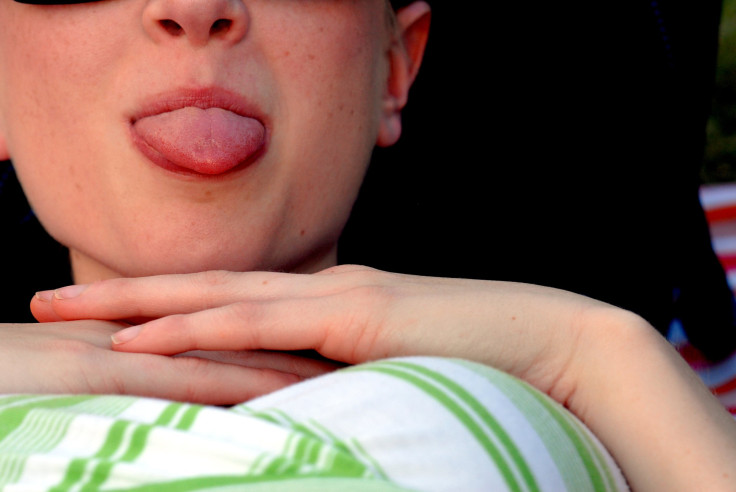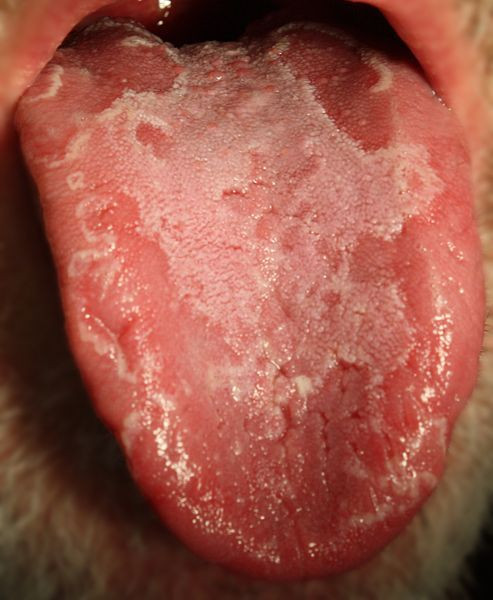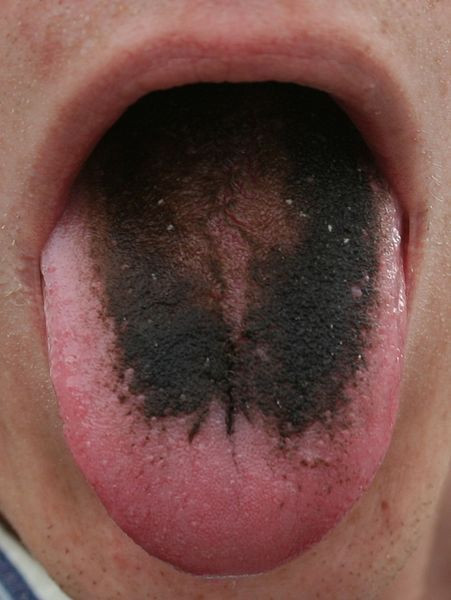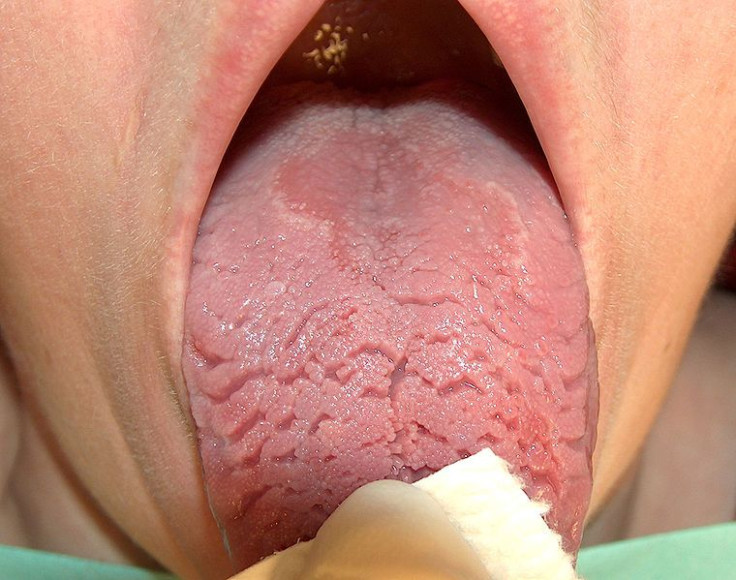Why Is My Tongue White? 4 Weird Tongue Problems And Their Symptoms

The tongue, often referred to as the strongest muscle in the body, does a lot for us. Without it we wouldn't be able to talk or eat, so it's a pretty great thing we have one. What isn't so great, however, is when our tongues develop strange-looking, often unexplainable conditions. Check out four of the weirdest things that can happen to our tongues.
Geographic Tongue (Map Tongue)

The good news about geographic tongue is that it’s actually harmless — it’s benign and has not been linked to any type of infection or cancer. The bad news is that it makes your tongue look (surprise) like a map. A healthy tongue is covered in miniscule, pinkish-white bumps called papillae. With map tongue, patches on the surface of the tongue are missing papillae, so they look red and smooth, with slightly raised borders. Sometimes these patches will heal in one area, only to migrate to another.
As annoying and weird-looking as this condition is, it’s nothing to worry about. It only affects 1 to 3 percent of people, but it can happen to anyone at any age. Nobody is really certain what causes geographic tongue, but most of the time it just goes away on its own. If the condition causes any sensitivity or inflammation, which it can do occasionally, a dentist can prescribe pain relievers, anti-inflammatories, or supplements.
Black Hairy Tongue

Perhaps the most unappealing of all tongue conditions, black hairy tongue makes one’s tongue appear dark and furry. Again, the condition is surprisingly harmless, and it’s thankfully temporary. The appearance of a black hairy tongue stems from too much bacteria or yeast growth in the mouth, leading to a buildup on the papillae. This causes the papillae to grow and lengthen instead of shedding the way they normally do, which creates hair-like projections that can reach 15 times the normal length of a papilla.
Hairy black tongue has quite a few risk factors — poor oral hygiene, smoking, drinking a lot of coffee, being dehydrated, and using antibiotics, to name a few. Luckily, clearing up the condition is accomplished with simple oral hygiene. Thoroughly brushing and cleaning the tongue is the best way to combat its odd appearance, along with drinking a lot of water. And along with the rest of your body, your tongue would thank you if you quit smoking.
Fissured Tongue

This condition describes a tongue with grooves or cracks on the top surface of the tongue. These fissures vary in depth, though there is often a prominent fissure in the middle of the tongue. This condition is found in about 5 percent of the population, though it is more common in men and as people age. Fissured tongue also appears in as many as 80 percent of children with Down syndrome. The cause of fissured tongue is unknown, but it is also harmless. It is associated with no symptoms, so no treatment is deemed necessary.
Leukoplakia

Leukoplakia refers to thick, white patches that form on the insides of the cheeks, gums, and tongue. The patches cannot be scraped off. Doctors, as with most other tongue conditions, don’t know what directly causes leukoplakia, but they have pointed to tobacco as a main culprit in the condition’s development. Leukoplakia isn’t normally dangerous, but it has been linked to cancer as an early sign. Many cancers occur next to the areas leukoplakia occurs on, so it’s best to visit the dentist if you notice any symptoms.



























